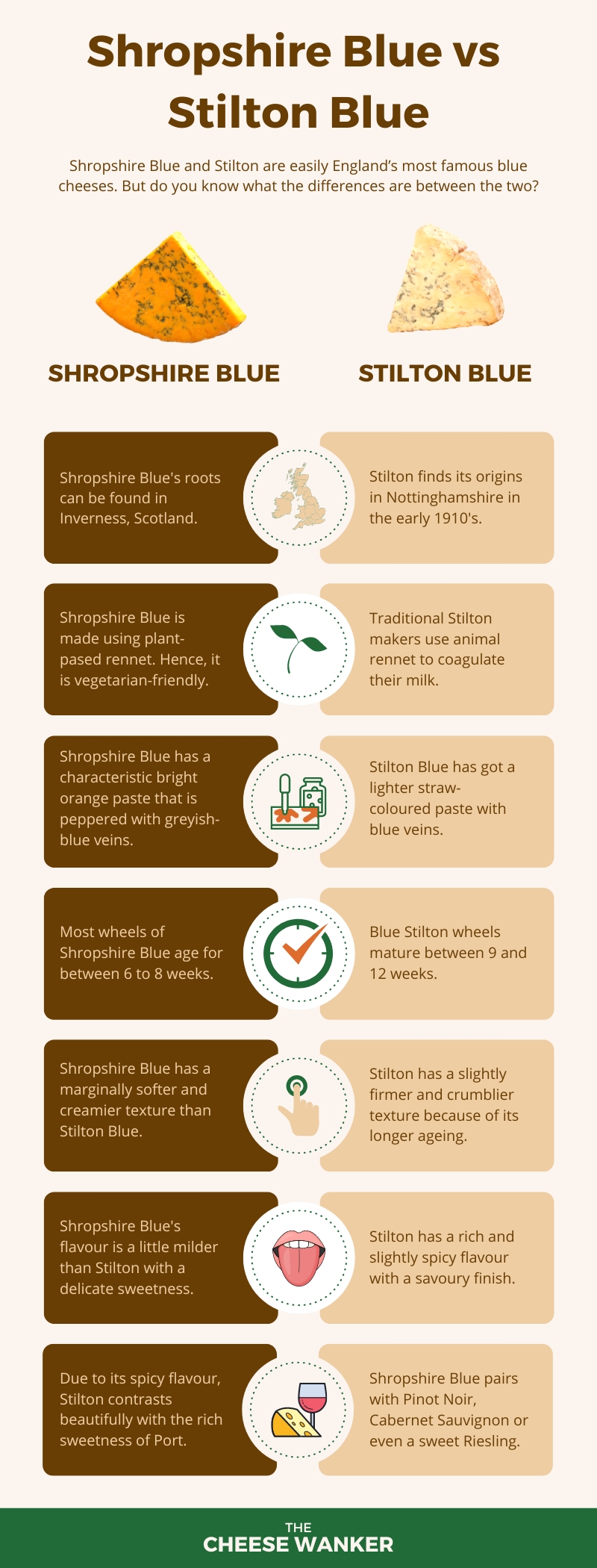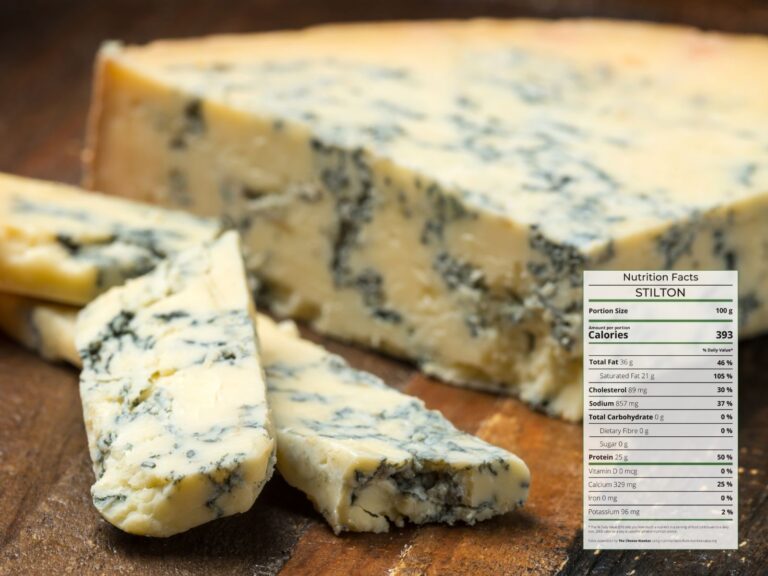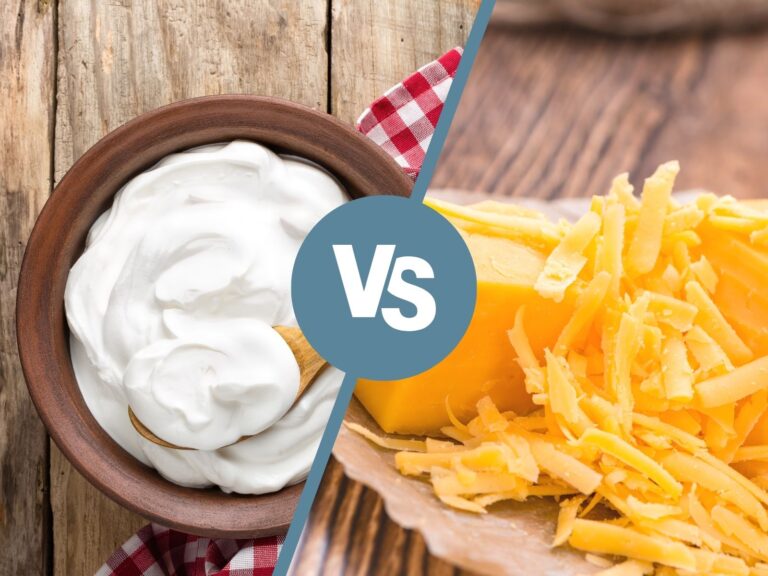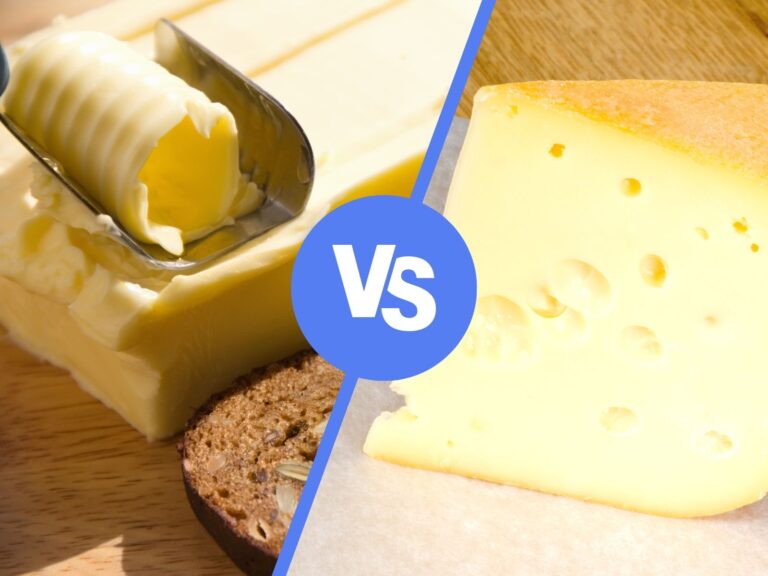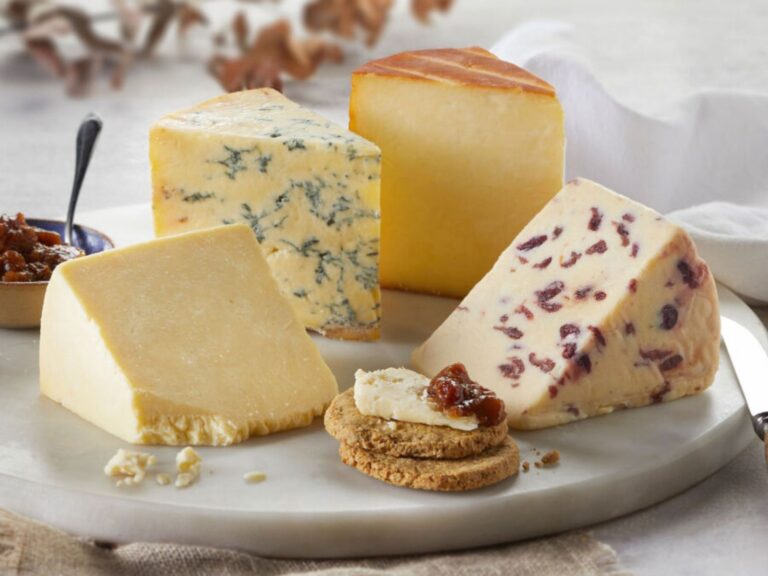Shropshire Blue and Stilton are easily England’s most famous blue cheeses. And those two traditional cheeses do indeed have a lot in common. But there are also some subtle traits that will allow a discerning cheese lover to tell them apart. Read on to learn about the origin, production and taste of Shropshire Blue and Stilton.
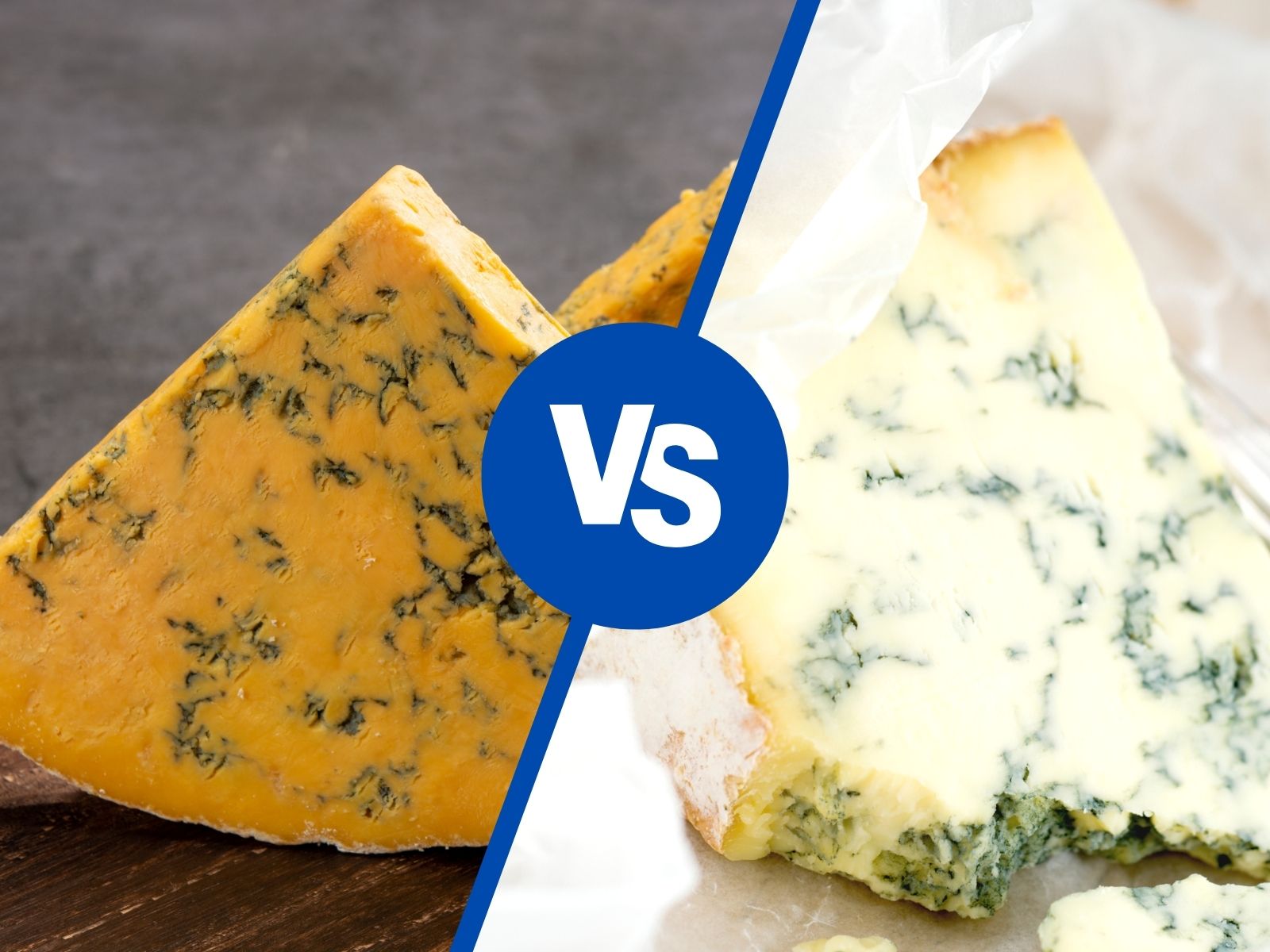
SEE ALSO: The reason why Stilton is not made with raw milk anymore →
What Shropshire Blue and Stilton have in common
Considering how visually similar the two cheeses are, it is not surprising to find that the recipes have a lot in common. Both cheeses are made using pasteurised cow’s milk and the same cheese starter cultures.
Furthermore, the signature blue veins are created by the mould Penicillium roqueforti which is added to the milk during production.
Moreover, both cheeses are made in a cylindrical shape and form a rugged natural rind during ageing. As a matter of fact, you would be hard pressed to find any observable difference between the two cheeses until you cut them open to expose the paste.
Now that we’ve covered their similarities, let’s have a look at the differences between Shropshire Blue and Stilton.
Origin
Stilton finds its origins in Nottinghamshire in the early 1910’s. Currently, the Stilton name is protected by a PDO which limits its production to the three counties of Nottinghamshire, Leicestershire and Derbyshire. You can read more about the dairies that make Stilton by clicking here.
In many ways, Shropshire Blue is a misnamed cheese. Indeed, its roots can be found in Inverness, Scotland rather than the English county of Shropshire. There are many claims to its invention and the most popular story is that of Andy Williamson. Back in the day, Andy was a trained Stilton make in Somerset.
After moving to Scotland, he decided to make a new cheese that was inspired by Stilton but also had some characteristics of another famous British territorial cheese, Cheshire. The ingredient he borrowed from the traditional Cheshire recipe was annatto.
Appearance
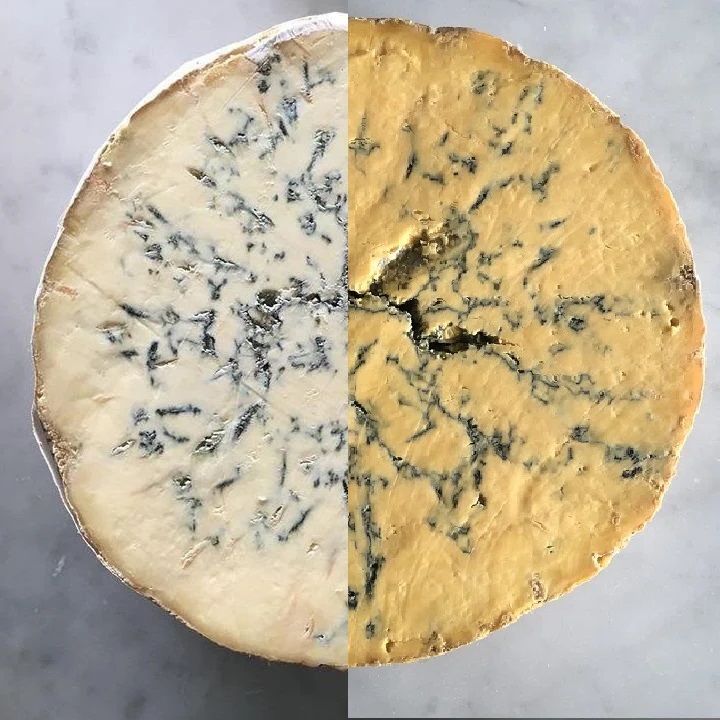
On the outside, you will really struggle to tell these two blue cheeses apart. This is due to the rugged natural rind that they both share. However, once you cut into the wheel of cheese, you will discover a paste that varies distinctly between Shropshire Blue and Stilton.
Indeed, Shropshire Blue has got a characteristic bright orange paste that is peppered with greyish-blue veins. As we mentioned above, the natural red dye annatto is the reason for this colour.
Despite popular belief, annatto does not impact the flavour of this cheese in any way. But we’ll get back to the flavour differences between the two cheeses a bit later.
Rennet
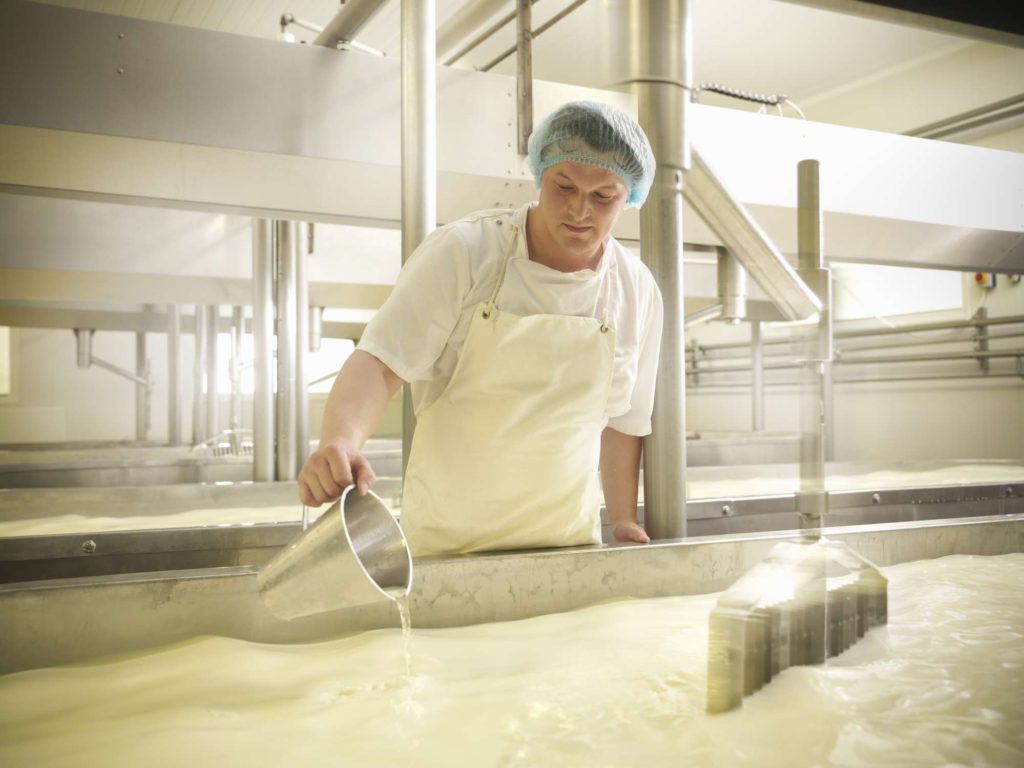
Rennet is an essential ingredient in cheesemaking. Indeed, this enzyme plays a major role in coagulating milk and transforming it into cheese. There are three main types of rennet used in cheesemaking: animal, vegetable and microbial.
You can take a deeper dive into the world of rennet by clicking here.
Traditional Stilton makers use animal rennet to coagulate their milk. On the other hand, Shropshire Blue is made using vegetable rennet. As a result, the latter is a vegetarian-friendly cheese. As we will discuss later, the choice of rennet also has a subtle impact on the flavour of the cheese.
Maturation
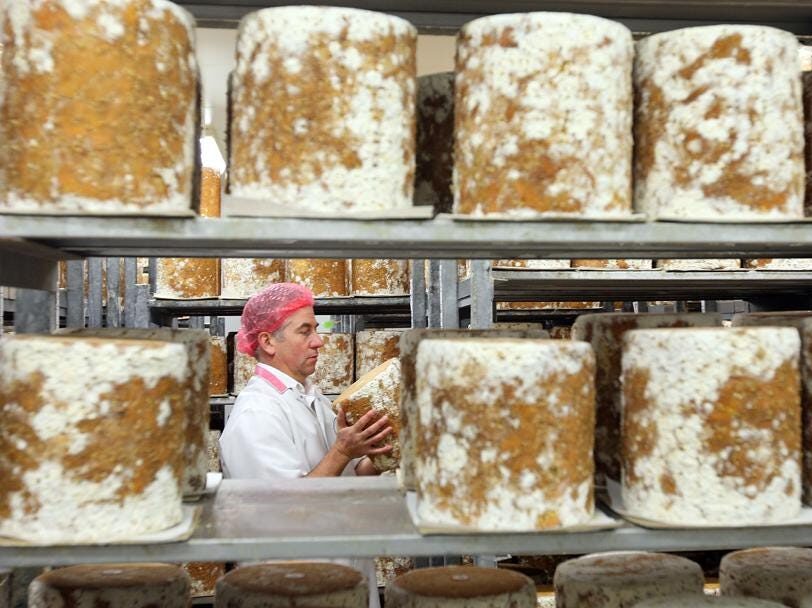
Even though the two cheeses look very similar on the outside, they are actually aged for different periods of time. Cheesemakers in Nottinghamshire, Leicestershire and Derbyshire start selling their Blue Stilton after nine weeks of maturation. And some wheels are aged even further up to 12 weeks.
On the other hand, Shropshire Blue is a little bit younger. Most wheels of this annatto-coloured blue cheese will hit retailers between six to eight weeks after production. Due to this difference in age, your palate will notice subtle variations in texture between the two cheeses. And this gets us to our next point.
Texture & Flavour

As we have already mentioned, the differences in the organoleptic properties of the two cheeses are very subtle. Because it is slightly younger, Shropshire Blue has a marginally softer and creamier texture.
Moreover, its flavour is a little milder than Stilton with a delicate sweetness. Having said that, you can still expect the rich and slightly spicy notes that are synonymous with Stilton.
Pairings
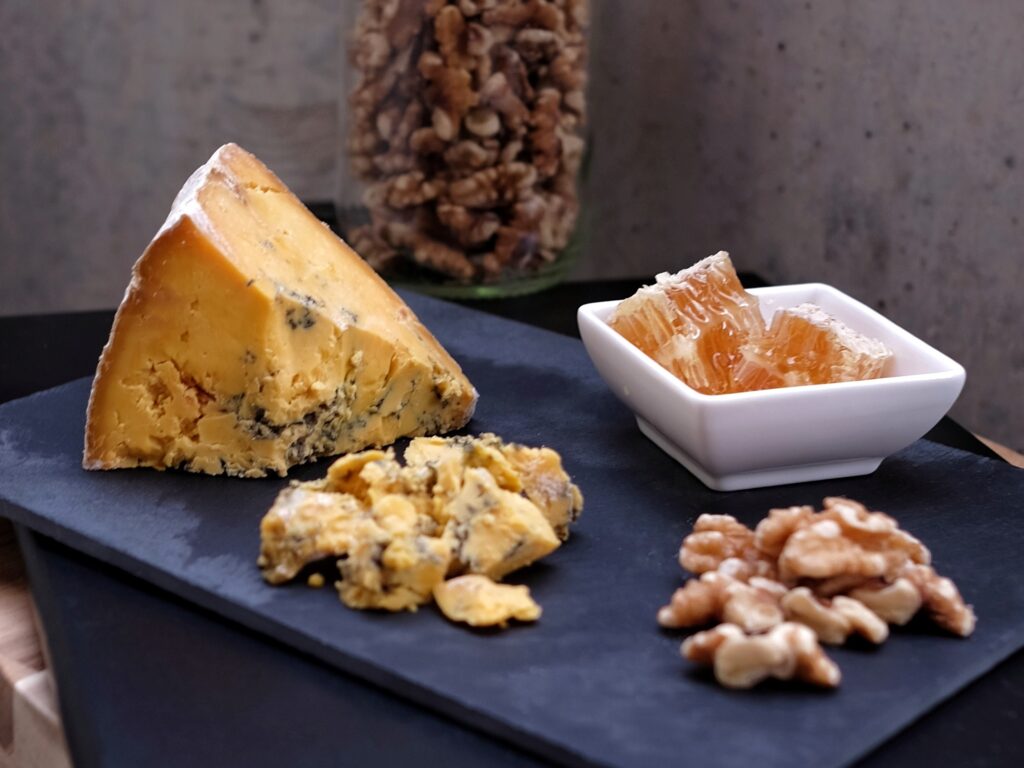
In general, blue cheeses pair well with honey and pear. And these two stellar British blues are no exception. However, when it comes to beverages, you will want to pair Shropshire Blue and Stilton slightly differently.
The traditional pairing with Stilton is dessert wines such as Port. Due to its robust savoury and spicy flavour, Stilton contrasts beautifully with the rich sweetness of Port. Some other popular pairings are with Dark Ale, Stout and a smoky Scotch Whisky.
Since Shropshire Blue is a little milder and creamier, you will want to pair it with a different type of beverage. Indeed, this blue will match beautifully with a glass of Pinot Noir, Cabernet Sauvignon or even a sweet Riesling.
Shropshire Blue or Stilton?
So, now that you know the differences between Shropshire Blue and Stilton, drop me a comment with your favourite blue.
For me, it really depends on the mood I find myself in. If I’m looking for something a bit spicy that will knock my socks off, I choose Stilton. But if I’m feeling a little bit mellow, I grab the Shropshire Blue.
